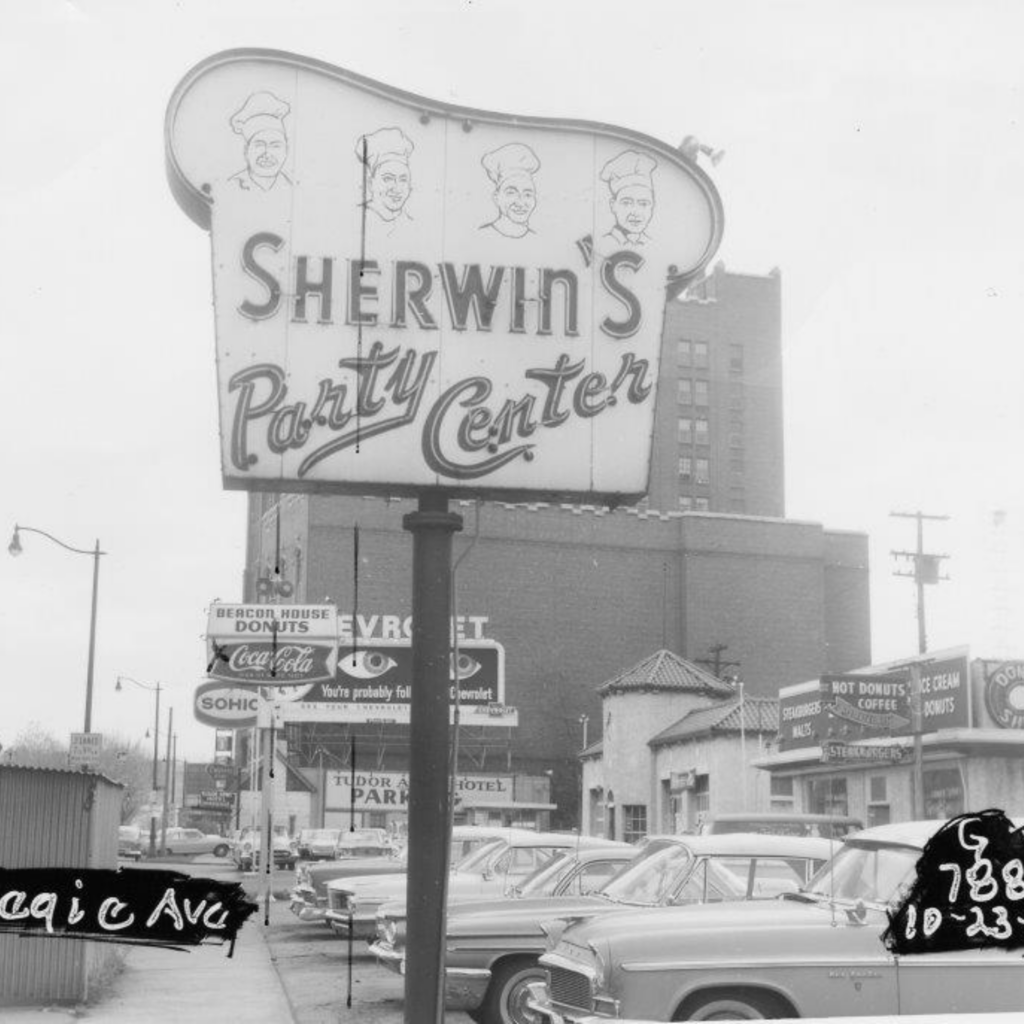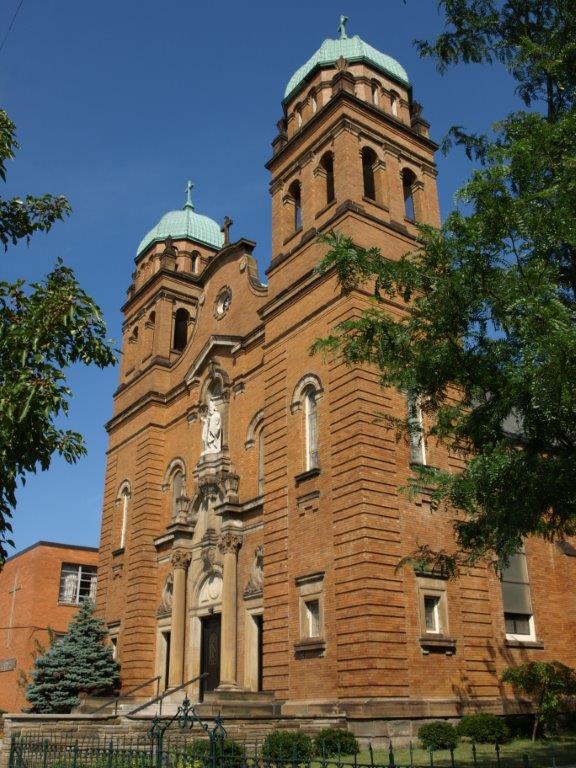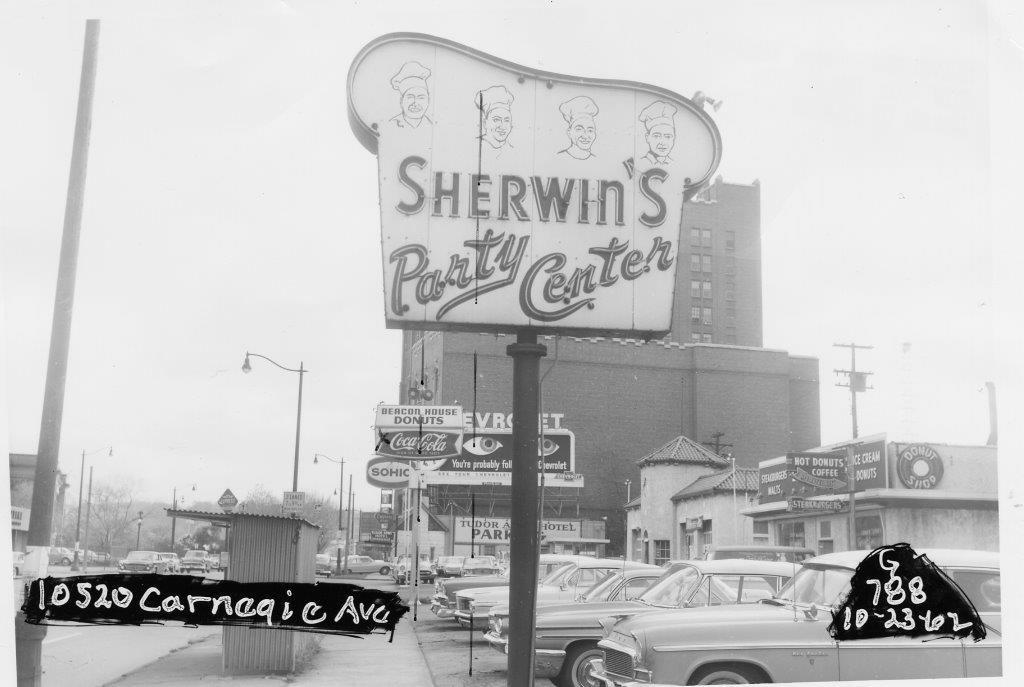

My mother, Helen (Wright) Cansler was from Sharon, Georgia; and my father, Melvin Cansler, was from Memphis, Tennessee. They came to Ohio in the Great Migration of the 1920s. They met on the #8 bus on Cedar Avenue. My father thought, “Hmm, she’s pretty and very nice!” And although he was very shy, he began talking with her. That is how they met and fell in love. They married in 1942 and bought a house on East 103rd Street off Cedar Avenue, in 1944.
African Americans came North for jobs and a better life. My mother had three brothers and a sister, and they all came here with their parents, Willie, and Alberta Wright. My dad came by himself. Mom’s parents died early, and she had to raise her youngest brother and manage the household at the age of 16. She left school to do this.
Two of my uncles, Eugene, and Albert Wright, were interested in working on cars. They took automotive courses and owned a business on Cedar Avenue (between East 103rd and East 105th) for almost 50 years. Eugene’s son, Donald, also owned a towing business on about East 106th Street off Cedar Avenue, in the 1970s and early 1980s. They owned one of the first, Black-owned, AAA towing services in the area. My other uncle and his wife, James, and Sarah Wright owned a grocery store, Wright’s Atomic Foods at East 100th Street and Cedar Avenue. They had delicious meat, fruits, vegetables, and many other items. Their business thrived, and they allowed some people to pay for groceries when they could. Community members were grateful for their kindness. Folks would come to the store and say, “Hey, Jimmy, I’ll pay you $50 or $100 on Friday,” and they did!
My uncles who owned Wright’s Sohio gas station, later called Wright’s Automotive, worked on cars from Boyd’s Funeral Home, the oldest funeral home in the area. They had customers from the neighborhood and surrounding communities. People liked my uncles, because they were great guys, who served the public well. They had one of the first Black-owned, Sohio Gasoline Stations. Back in the late 1940s and 50s, that was a great feat for two Black guys. Our family was immensely proud of them, and they were nationally known for their business. At retirement, they all sold their land to the Cleveland Clinic in the early 1990s.
My father worked at TRW, (Thompson, Raymo, Wooldridge), a company that built aircraft parts and other automotive supplies. My mother did not work until I was in high school. She began as a night cleaner for The Cleveland Public Schools, at John Hay High School. Some mothers did not work while their children were young. They took care of their households. She was an excellent worker and was asked to work during the day as an attendance clerk. She took classes at night school, got her high school diploma, and attended Cuyahoga Community College.
Our house was a colonial, and it had a basement, 1st floor, 2nd floor and an attic. If any relatives needed a place to stay, they stayed with us, even though we only had one bathroom. I will never forget those years. I do not know how we did that! But they were so organized. Back in those years, family meant everything. They all worked together. My uncles would come over during the week, and knock on the door, “tap-tap-tap-tap-tap” –they had a special knock. And we would hear it, and say, “OK, Uncle Gene or Uncle Al” and open the door. My brothers, Roger and Clayton and I, were always excited to have them visit us. When teenagers, one brother worked at the station and the other at the grocery store.
East 103rd Street had lovely homes. The yards were well kept, and the neighborhood held to a high standard. Homes were decorated beautifully at Christmas time. My parents and others had street clubs and worked together to improve the area. My mother was one of the street club presidents. They met at each other’s homes. Everyone came together, had a meeting, and enjoyed delicious refreshments. It was a wonderful time! You could leave your doors open and no one would bother your home. Wreaths were placed on doors if someone passed away, so neighbors could visit, support the family, and bring food. We went on picnics and other recreational activities. We grew up in simpler times!
So many businesses were right here in our community. We did not have to go downtown unless we wanted to, and that was a real treat. There was an OB-GYN doctor, dentists, attorneys, churches, a library, a record shop, a skating rink, barber and beauty shops, a dress shop, a bike shop, a photography studio, restaurants, bars, and countless other businesses. We could also walk to East 105th Street and Euclid Avenue, for shoe stores, a bank, a candy shop, movie theaters and other places of interest.
Our neighborhood was Black. There were some white families who lived off East 105th Street. Black and white boys went to the local YMCA on East 105th Street. Both my brothers went to John Adams (High School) and there were large numbers of Black and white students. The only place we felt we could not go to at that time was Little Italy. We were told not to venture to that area.
My parents were wonderful people. They made sure that we got a good education and that we graduated from high school. I attended John Hay (High School) and took business classes that included shorthand and typing. I did very well, and after high school I worked at ESB Incorporated, (Electric, Storage, Battery Company), located on the ninth floor of the East Ohio Gas Building on East 9th and Superior. I worked there for three years, fell in love, got married and moved out of the city for six years. I had one daughter during that time.
I returned to Cleveland in 1976 and began working for the Cleveland Public Schools, as a school secretary. I had a wonderful principal who encouraged me to return to school and further my education. So, in the 1980s, I took one class a quarter at Tri-C. I met some great people along the way and transferred to Cleveland State University to be in a Teaching Leadership Consortium (TLC Program) for non-traditional students. Because I continued working and attending evening classes, it took a while to get a bachelor’s degree in education. I began teaching and went back to school to get a master’s degree. I taught for five years at John Hay and finished my teaching career at East Technical High School.
While getting my education, I made sure that I supported my daughter, Tyrena, in her school and extracurricular activities. It was very difficult, but I didn’t want to neglect her in any way. She attended St. Adalbert Catholic School. We were not Catholic, but they had (and still have) a great school on East 83rd Street, which offered after-school babysitting services. She completed high school at Beaumont School for Girls, then went on to Howard University and earned two degrees.
Things changed as times changed in the neighborhood. People moved out, others died, and homes were left standing or torn down. When the CCF (the Cleveland Clinic Foundation) began building in the area, the neighborhood changed drastically. At first, I was hurt. I felt that the CCF helped some of the people with employment and health services, but not everyone. This area has gone through lots of changes, but I am so glad I stayed. When Council President Blaine Griffin took over Ward 6, he was committed to meeting with Dr. Mihaljevic, the CEO of Cleveland Clinic, to walk the neighborhood and meet some of the residents, so that the Clinic would become a ‘good neighbor’ in the community. Because of where I lived, right next door to the new Meijer’s Fairfax Market, I, too, got a chance to meet Dr. Mihaljevic, and the CEO of Meijer’s Stores. I am also grateful to Mrs. Denise Van Leer, Executive Director of the Fairfax Renaissance Development Corporation (FRDC) and her staff, for working tirelessly in our area to promote growth and development. I am still a resident! People always ask me, “Why did you stay in the area?” Now, they are impressed with the revitalization of the Fairfax neighborhood!”


